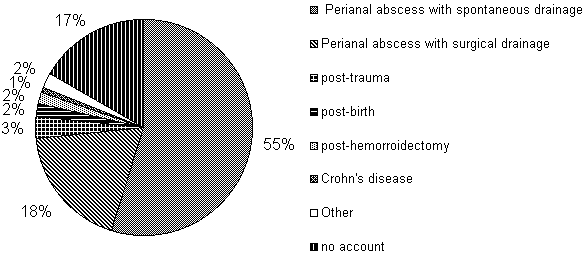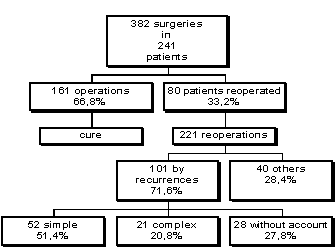Perianal fistula, usually has a criptoglandular etiology, developing from a perianal abscess and communicating the anal mucosa with the perianal skin. The aim of this paper is to study retrospectively 241 cases of perianal fistula (172 men and 69 women; 2,5:1) aging from 7 and 80 years old (average: 37,4 years), operated on at the Hospital da Clínicas - UFMG, from 1977 to 1996. The surgical techniques and post-operative outcome have been analysed. Perianal abscesses with spontaneous drainage were the predominant etiology (132 patients; 54,8%). Eighty percent were submitted to fistulectomy as the first surgical treatment. Among early complications (78; 32,4%), local pain was the most frequent (60; 24,9%). Among the late complications (136; 56,4%) fistula recurrence (101; 41,9%) was the most frequent. There were 141 reoperations in 80 patients. Fistulectomy was the predominant surgical technique employed for the treatment (101; 71,6%). The average hospitalization time was 6,3 days until 1990 and 1,5 day from 1991 to 1996, after the advent of day-surgery beds in HC-UFMG. The surgical treatment of perianal fístula has a significant rate of post-operative complications and a high recurrence rate, in spite of the short stay in hospital.
Perianal fistula; perianal abscess; fistula treatment; fistula complication





